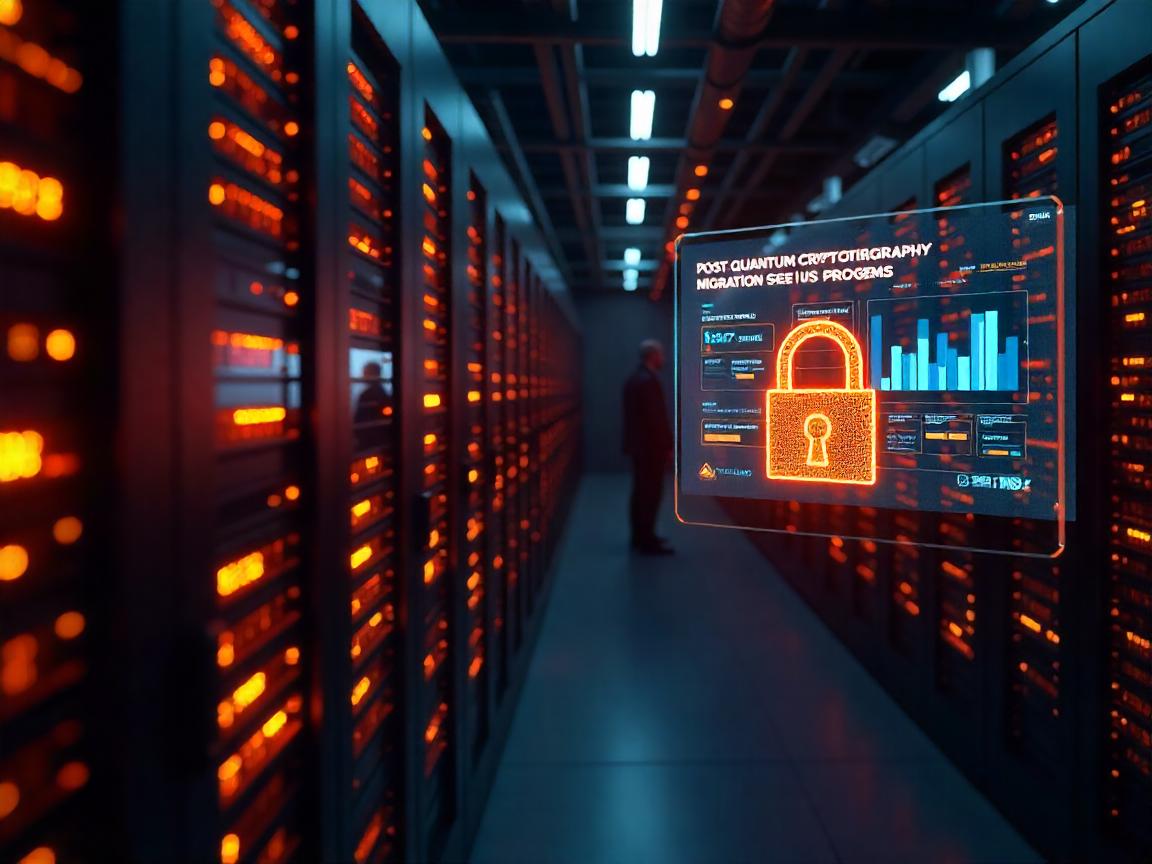
Q-Day may sound like the name of a dystopian thriller movie, but to any cloud security manager, it is more of a nightmare than a product of fiction imagination. Quantum computing is getting a little too close to reality, which now literally makes all the previously impenetrable cryptographic standards weak and wobbly. Of course, it is not just a question of whether or not RSA and ECC will collapse under quantum attacks, most pundits are sure that they will. How soon, is the only question and whether the enterprises are prepared there is a tipping point.
In July 2024 a suite of post-quantum algorithms received official NIST approval, including CRYSTALS-Kyber and Dilithium. This feat sparked the race among cloud leaders. AWS, Google Cloud and Azure currently have a race against the clock to retrofit entire massive infrastructures before quantum breakthroughs leave their roadmaps astray.
The Quantum Threat No One Can Ignore
Never does it pay to make the assumption that encryption is bombproof, especially in the event that you have ever made such an assumption. Mathematically, Shor algorithm, which was published some in the 1990s, showed that a powerful enough quantum computer could factor large primes exponentially faster than a classical machine. This would imply that one day RSA-2048, which would see a classical computer break it after trillions of years, may be broken in hours or days.
This makes it no longer theoretical hand-waving. IBM 2025 roadmap predicts a future where the machines have more than 10,000 qubits in 2029. In the meantime, there are these silent attacks, whereby harvest now, decrypt later attacks are nevertheless harvesting encrypted traffic. Almost ten years ago, NSA alerted that the enemies probably stored sensitive information expecting Q-Day. Using an unnamed study commissioned by Deloitte in 2024, 67 percent of those surveyed enterprises reported having not having clear transparency into the routing of flows on which quantum-vulnerable encryption relies. It is a grim statistic to be computed by any CTO.
Cloud Giants’ Push Toward Quantum-Safe Infrastructure
These companies have been carrying such pilot implementations based on hybrid use of classical and post-quantum algorithms in the past year:
- In Chrome Canary Google Cloud introduced CECPQ2 hybrid key exchange, which tries Kyber and X25519 in silence.
- The AWS has released Kyber-enabled TLS endpoints in some regions to enable the customers to experiment with quantum-safe connections.
- Azure has released a new SDK called the Quantum Safe that specifically aims at regulated markets in which regulations are not negotiable.
One example of a case study in the real world explains why such moves are essential. Late in 2024, one of the biggest European telcos discovered that nearly 30 percent of its own services had hard-coded RSA keys embedded in legacy infrastructure. The relocation took hundreds of developer-hours and bespoke tools and took over $7 million of work that was unforeseen. I have observed this to play out in healthcare and finance applications, where urgent systems cannot just be replaced and swapped overnight.
The Hidden Costs of Quantum Transition
Suppose that you assume that hardware timelines lag by a few years, there are still some hidden costs to the migration to post-quantum cryptography. Most of the leaders are preoccupied with TLS endpoints and APIs but most of the long-tail dependencies remain overlooked: the old libraries, IoT legacies, and third-party SaaS applications.
What further complicates this is here:
- IoT devices with sensors, ten years old, cannot upgrade their firmware remotely.
- You need to re-encrypt backups stored in archives to prevent future access.
- Regulatory systems such as HIPAA and GDPR that fail to stay at par with standards.
In my personal experience, I also recommended companies that experienced its magnitude only after they initiated a review of stock. A Fortune 500 customer believed it has a dozen encryption touchpoints; this turned out to be excessive as there were more than 500 touchpoints. That is the issue with cryptography, it is unnoticeable when succeeds, yet disastrous when it fails.
Building a Quantum-Ready Strategy
What then can smart organizations do today to put themselves ahead of this change? In the majority of the cases, the future will involve technological migrations, as well as cultural displacement.
These are basic steps:
- Cryptographic Inventory: document all protocols, libraries and devices on which they are using sensitive data.
- Hybrid Deployments: Start to implement Kyber-enabled TLS on high-risk workflows and make sure that existing applications and code remain compatible.
- Third Party Vetting: Evaluate the vendor roadmaps around their plans to be quantum-ready, but do not underestimate your SaaS partners when it comes to quantum.
- Training & Awareness: Teams should not approach post-quantum migration as a job in seclusion.
You could effectively compare it to evacuating the population of an entire coastal city before a hurricane—it becomes a seamless process when you do it properly.
Once you delay too long, then the scramble is exponentially more difficult.
Final Thoughts: Q-Day and the Future of Trust
Look at the rate of quantum computing development and how seriously NIST takes its standards, and it becomes obvious that we are approaching the moment of no return. If you try to anticipate an ideal time to migrate encryption, you create a formula for exposure.
What is my take? Any organization that treats preparing for Q-Day as merely checking a compliance box will blindside itself.”Or, more simply: The individuals who create muscle memory today, and through inventories, hybrid rollouts, training, will be the people to build the trust by the time quantum decryption is in the real world.
Eventually, all encrypted information will go under the quantum test. It is not a question of being able to afford the preparation of something but not affording it.